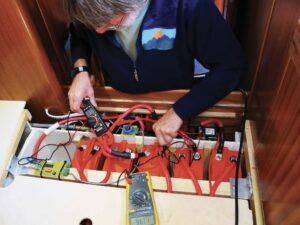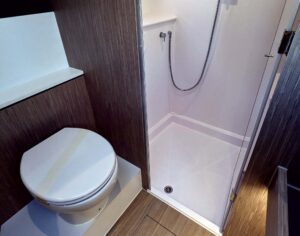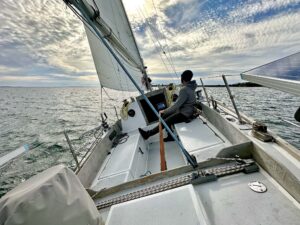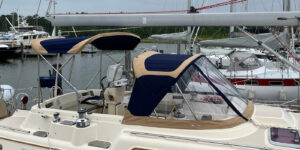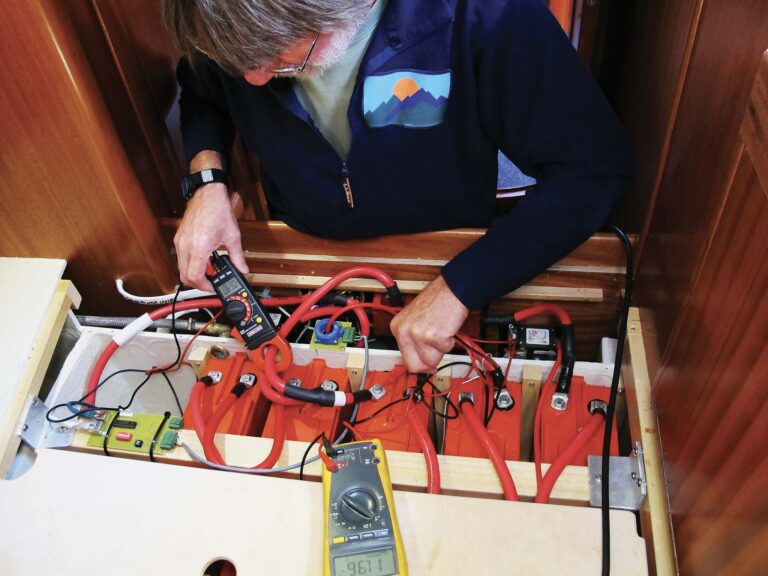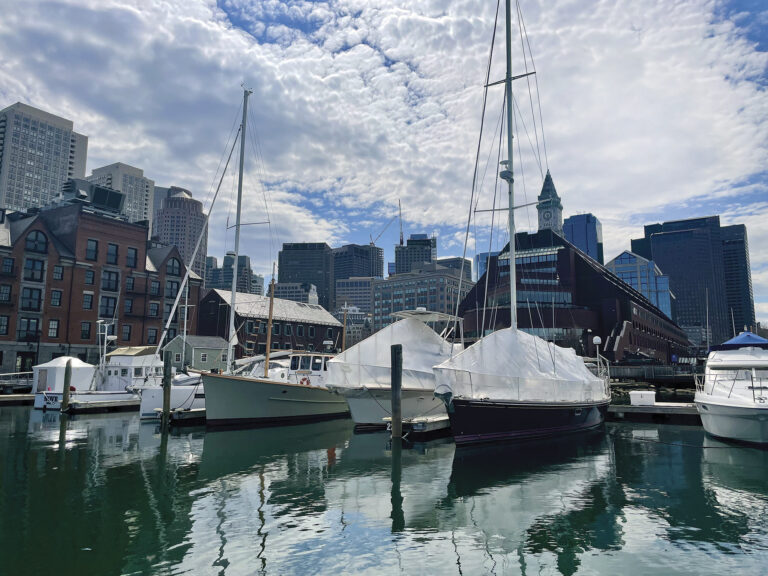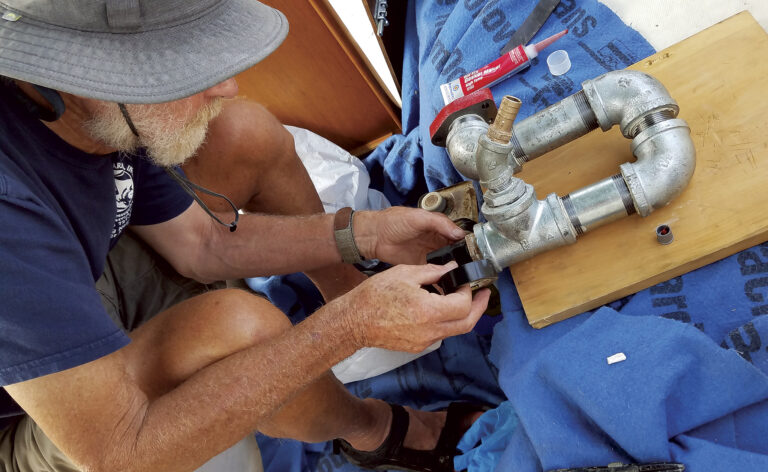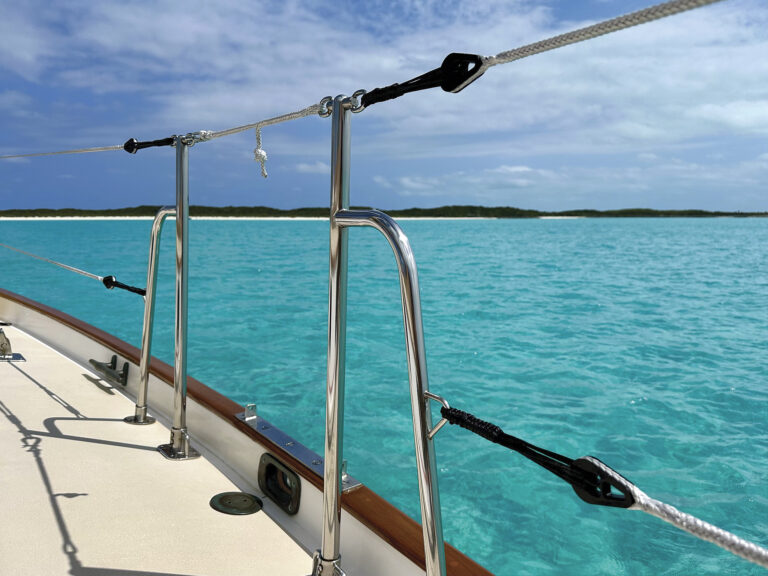Swing Rig
This rig is new and relatively untried. Designed by Van de Stadt and built by Dutch composite-structures specialist Johan Vels, it features a single full-batten sail set on a boom and an unstayed carbon wing mast that can pivot through 360 degrees. This enables the sail to be correctly sheeted on the broadest of reaches while still functioning as an airfoil and generating lift. It can also be gybed by letting it swing forward of the mast and taking it around on a lazy sheet led from the other side.
Because the mast swivels as the sheet is eased or trimmed, the relationship between the mast’s foil section and the sail is constant, creating what is effectively a flowing wing profile on all points of sail. Just below the deck bearing, the mast is tilted forward roughly 5 or 6 degrees. This means that as the sheet is eased, the above-deck portion of the spar angles itself to windward of the conventional vertical plane relative to the deck. This carries the sail’s center of effort closer to the boat’s centerline, which helps balance the helm. This also has a marked influence on sheet loads, which are reportedly light.
To date, use of these rigs has mostly been confined to extreme raceboats, but some useful passages have already been made and Vels has constructed at least one large swing-rig cruiser.
Freedom Rig
The Freedom Rig was developed in the mid-1970s by former Olympic Finn sailor Garry Hoyt. The early Freedoms featured a cat-ketch rig with freestanding spars and two-ply wraparound sails set on wishbone booms; they were among the first production boats to use carbon-fiber masts. The sails required no vang and were satisfyingly efficient. As with any unstayed rig, the need to reef is minimized because the top of the mast twists off and depowers the rig as the wind increases. Downwind, the sail can be winged out square to the wind. Hoyt’s original boat was the Freedom 40, which had a distinctive hull well-suited to the rig. Various other versions followed, including the Freedom 33, designed by SAIL’s technical consultant, Jay E. Paris.
Over time the Freedom rig evolved, sprouting full-batten sails with conventional booms and tracks and slides on freestanding carbon spars. In 1987, the concept was taken on by Gary Mull with the cat-sloop Freedom 30 and larger versions. More-modern Freedoms feature standard booms and a single mast, but the unstayed carbon-fiber spar has remained, headed up by an unconventional self-tacking jib.
The early boats had only adequate upwind performance, but went like rockets downwind. As with all unstayed rigs, chafe is eliminated, making Freedom rigs attractive for long downwind passages. Successful variations of the original wishbone-boom rig have also been seen over the years on Nonsuchs and Wyliecats.

